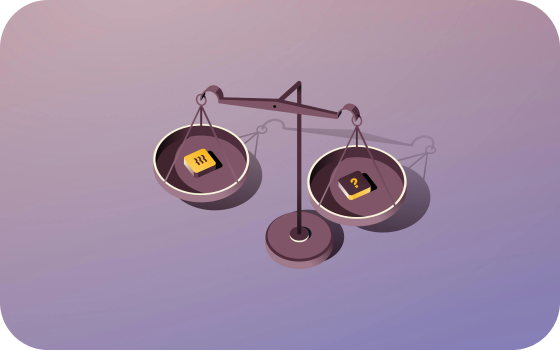A TD1 (Personal Tax Credits Return) is a Canadian tax form that employees fill out to let their employers know how much income tax to deduct from their paycheck. It helps ensure that the correct amount of tax is taken based on the employee's situation, such as their basic personal amount, age amount, or if they have any dependants.
There are two types of TD1 forms: the federal TD1 and the provincial TD1 form. The federal form applies to all of Canada, while the provincial TD1 form is specific to each province or territory, like Ontario or Quebec. Both forms are used together to calculate the total amount of tax that should be deducted from an employee's employment income.
Completing the TD1 form is important because it ensures the Canada Revenue Agency (CRA) receives the correct tax deductions. This prevents employees from paying too much or too little tax, which could affect their tax return at the end of the year.
What information should be included on a TD1 form?
When filling out a TD1 form, employees provide important details that affect how much income tax is taken from their pay. One of the main sections is the basic personal amount, which is the total income someone can earn without paying taxes. Other fields on the form include:
- The age amount (for people 65 or older)
- The caregiver amount (for those supporting a dependent)
- The disability amount (for those with a disability or supporting someone with a disability).
The total of these credits is known as the total claim amount, which directly affects the amount of tax that will be deducted from the employee's paycheck. The higher the total claim amount, the less income tax will be deducted.
Another important section on the TD1 form is line 13, which applies to employees working in a prescribed zone, such as certain Canadian remote areas.
Employees working in these zones may be eligible for additional tax credits. Filling out these fields accurately ensures that employees have the correct tax deductions, helping them avoid surprises at the end of the year when they file their tax return.
Filing requirements for employers and employees
When someone starts a new job or becomes a new employee, they must complete a TD1 form. This form tells their employer how much income tax should be deducted from their paycheck based on their situation.
Employees must also update their TD1 form if their situation changes, like if they get married or move to a new province, such as Quebec or Ontario. These updates help ensure the correct amount of tax is deducted.
Employees who have more than one job must inform their employers using the TD1 form. They can only claim the basic personal amount on one job, so they must fill out their TD1 forms accordingly for each employer to avoid over-claiming tax credits.
Employers are responsible for collecting and storing these completed forms. They must keep a copy on file for each employee to ensure accurate tax deductions and to meet the requirements set by the Canada Revenue Agency (CRA). Employers are also responsible for updating the form when employees report changes, such as a new common-law partner or changes in pension income.
Both employees and employers must follow these rules to avoid errors that could lead to paying too much or too little tax throughout the year.
How to fill out a TD1 form?
You have to complete the TD1 form correctly to ensure the right amount of income tax is deducted from your paycheck.
Here's a step-by-step guide:
- Personal information: Start by filling in your basic details, such as your name, address, and social insurance number.
- Basic personal amount: Every employee is entitled to the basic personal amount, which is the amount of income you can earn before paying income tax. You should claim this unless you have already claimed it with another employer.
- Declare dependants and partners: If you have an eligible dependant, like a child or a spouse, you can claim additional credits. If you have a common-law partner, make sure to declare their information, as it may affect your total claim.
- Other credits: Fill in any applicable amounts, such as the caregiver amount for taking care of an infirm person, or the disability amount if you or someone you support has a disability. You can also claim tuition fees if you're a student.
- Pension and other income: If you receive pension income or have any other sources of income, like RRSP withdrawals, make sure to declare them on the TD1 form.
- TD1-WS worksheet: If you need to calculate extra credits or amounts, use the TD1-WS worksheet. This is especially useful if you have more complex tax situations, like additional claims beyond the standard amounts.
- Multiple jobs or self-employment: If you have more than one job or are self-employed, be careful not to claim the basic personal amount more than once. You can only claim this amount on one job, so make sure to fill out your TD1 form correctly to avoid owing taxes later.
Filling out the TD1 form will prevent surprises when it's time to file your tax return with the Canada Revenue Agency (CRA).
Provincial and territorial TD1 forms
In addition to the federal TD1 form, there are also provincial and territorial TD1 forms that employees in Canada need to fill out, like the TD1ON for Ontario. These forms help calculate the correct amount of tax that should be deducted based on the rules in your province or territory.
The main difference between the federal TD1 form and the provincial or territorial TD1 forms is how they account for provincial tax rates and credits. While the federal form applies to all of Canada, the provincial or territorial forms reflect the specific tax deductions and personal tax credit amounts available in each region.
For example, Quebec's tax rules differ from those in Ontario, so the TD1QC form in Quebec will account for different credits than the TD1ON form in Ontario.
Each province and territory has its own tax rates and credits, which can impact the total claim amount and the amount of income tax that is withheld from your paycheck.
For example, Quebec has higher tax rates than Ontario, meaning Quebec employees have more tax deducted. Understanding how these differences apply to your employment income ensures that you're paying the correct amount of tax throughout the year.
Common mistakes to avoid when completing TD1 Forms
When filling out a TD1 form, you should avoid common mistakes to ensure the right tax amount is deducted from your paycheck.
Here are some key mistakes to watch out for:
- Claiming the basic personal amount on multiple jobs: Employees can only claim the basic personal amount on one job. If you have more than one job, make sure you only claim this on your main source of income to avoid having too little income tax deducted.
- Errors in claiming the disability tax credit or infirm children: If you’re eligible for the disability tax credit or claiming for infirm children, double-check that you're filling out the correct sections. Misreporting these amounts can lead to tax problems later.
- Claiming exemptions you’re not eligible for: Avoid claiming exemptions or credits that don’t apply to your situation. For example, if you don’t have an eligible dependant or aren’t eligible for the caregiver amount, don’t fill in those sections.
- Employers deducting the wrong amount of tax: Employers must ensure they’re using the correct amount of tax credits when calculating deductions. Keeping up-to-date completed forms and checking for changes in an employee’s situation is crucial for accurate deductions.
- Not updating the TD1 form when your situation changes: Employees should update their TD1 form if there are significant changes, such as getting married, having a child, or moving to another province like Quebec or Ontario. Failing to update the form can lead to incorrect tax deductions.
- Forgetting to use the TD1-WS worksheet: Some employees need to use the TD1-WS worksheet to calculate their total claim amount. If you have multiple credits, like the disability amount or pension income, not using this worksheet could cause you to claim the wrong amount of tax credits.
- Overlooking pension income or other sources of income: Employees with pension income or multiple sources of employment income often forget to account for this on their TD1 form. This can lead to under-deductions and a large tax bill when filing their tax return.
Assuming exemption from tax deductions: Some employees mistakenly think they’re exempt from income tax deductions without qualifying. If you’re claiming full exemption, such as if you're a student with a low income, make sure you meet the CRA's requirements.
TD1 form vs. other tax forms
The TD1 form is different from other tax forms like the T4 slip and RRSP deduction forms, and it serves a unique purpose in Canada’s tax system. Here’s how it compares:
TD1 form vs. T4 slip
The TD1 form determines how much income tax should be deducted from an employee’s paycheck annually. It’s filled out when someone starts a new job or their personal situation changes, like getting married or moving to another province, such as Quebec or Ontario.
On the other hand, employers issue the T4 slip at the end of the year and summarize an employee’s employment income and tax deductions for the year. While the TD1 form sets up the tax deductions, the T4 slip shows the results of those deductions for filing a tax return.
TD1 form vs. RRSP deduction forms
The TD1 form claims credits like the basic personal amount, age amount, and other tax deductions throughout the year. Meanwhile, the RRSP deduction form is used to report contributions to your Registered Retirement Savings Plan (RRSP), which can reduce the amount of income tax you owe when filing your tax return. RRSP contributions are generally reported during tax filing, but the TD1 form impacts your annual pay deductions.
TD1 form updates and recent changes
The TD1 form is updated by the Canada Revenue Agency (CRA) occasionally to reflect changes in tax rules and credit amounts. Employers and employees need to be aware of these updates to ensure the correct amount of tax is deducted from employment income.
The CRA may issue new versions of the federal TD1 and provincial TD1 forms each year. These updated forms often include changes to the basic personal amount and other personal tax credits. Employers should make sure their employees fill out the most current version to avoid tax deduction errors.
Adjustments to non-refundable tax credits, such as the disability tax credit or the caregiver amount, can affect how much tax is deducted from an employee's paycheck. If there are increases or decreases in these credits, it can change the total claim amount on the TD1 form, impacting the employee's income tax deductions.
Employees who make RRSP contributions may see changes in their taxable income. Although RRSP contributions are typically handled when filing a tax return, large contributions near the end of the year can affect how much tax is owed. Employees should ensure their TD1 form is up to date to account for any adjustments in tax deductions.
Frequently Asked Questions About TD1 form
What are some best practices for managing TD1s?
To remain compliant with Canadian employment laws and tax regulations, employers must, for example, store completed forms securely to protect employee information, such as their social insurance number and other personal details.
This can be done through secure digital storage systems or locked physical files. Proper storage ensures compliance with CRA requirements and helps employers retrieve the forms quickly when needed.
Another good practice is using payroll software to process TD1 forms, as it can save time and reduce errors. Payroll software automatically calculates the correct amount of tax based on the information from the TD1 form, ensuring that the right source deductions are made for each employee. This is especially useful when there are updates to an employee’s status, such as changes in marital status or moving to another province like Ontario or Quebec.
How to fill out a TD1 form for BC?
To fill out a TD1 form for British Columbia (BC), you’ll need to complete both the federal TD1 form and the provincial form specific to BC. First, provide your basic information like your name, address, and social insurance number. Then, claim the basic personal amount along with any other applicable tax credits for which you are eligible, such as the age amount or credits for dependants. If you have pension income or are enrolled in a pension plan, ensure that this is reported on the form. Once filled out, submit the form to your new employer to ensure the correct amount of tax is deducted from your income.













































































